Almost every garden, dackets grow onions. His varieties are a lot, so that each gardener will find for itself the most suitable. Danilovsky onions is considered one of the best types of sparkle onions, which likes many for the middle bitterness and purple color of tubers. To grow large onions at home in the garden, it is necessary to properly plant it and take into account the peculiarities of the care and storage of tubers.
Onions Danilovsky - Culture Description
- The variety received its name because of the region in which it was derived. The species of the onion bows appeared as a result of the selection of culture from the local vegetable of the Danilovsky district, which is located in the Yaroslavl region. Then, on its basis, the new grade Danilovsky 301 was grown.
- A variety of culture is suitable for cultivation in areas with a short summer. The variety belongs to low-door or minority. It means that for 1 year in the nest can grow only one, less than two bulbs.
- Luke grade belongs to vegetables with an average maturation. If we sit down, then the bulbs ripen in 13-14 weeks. When planting seeds, the fruits are completely formed only after 16-17 weeks.
- Most often, the grade of the onions is grown in two-year culture. With this method from one hectare, you can collect from 120 to 300 kg. Vegetable. To get a harvest in a year when using seeds, sowing is needed in the winter.
- Each bulb in a mature form reaches a mass of 80-100 g. With proper cultivation and favorable conditions, it may grow to 160 g. The variety fruits have a rounded and flat shape, sometimes slightly flashed on top and bottom. The painting of the husk of purple shade with a pronounced red subtock.
- The flesh of Danilovsky onion is painted in light purple colors with a lilac hint. Very juicy and soft. According to the taste qualities of the vegetable moderately sharp with a sweet aftertaste. Because of this feature of taste, it is often used in the preparation of fresh vegetable salads and when preserving.
- Among the main advantages can be noted the high yield of culture. The bulbs are well tolerated storage and long-term transportation. Many hostesses like to use this line of Luke for the delicate taste and juiciness of the pulp. The ability to ripen in a short time allows you to grow culture in the northern regions of the country.
Danilovsky Variety Bow - Choosing a Place and Preparation of Soil
- The vegetable is planted in an open ground in several ways: with the help of seeds, Sevka (small bulbs) and seedlings. It is also possible to grow only a pen or bulb. Depending on this, there are different options for the preparation of the soil for planting, and the period of disembarking is changing.
- When choosing a place for landing onions, Danilovsky variety give preference to sunny places, a light half is allowed. It is definicient. Onion loves moderate moisturizing, so it needs solar heat to evaporate excess moisture.
- At the same time, the lack of moisture can lead to the early transition of the plant in the rest stage and the weak development of the bulb. Excess moisture will provide a plant rapid growth of the pen, but the bulbs will be too water and poorly will continue in winter.
- Luka needs a long day for the full ripening of tubers. Therefore, the bed must be located in an open place for it. Next to it should not land tall cultures, as the shadow will lead to a bad harvest.
- In addition to lighting, vegetable requires good air circulation. Since the plant is often susceptible to fungal diseases, the wind and good illumination will prevent the lesion of the onion with fungus.
- Danilovsky onions are very demanding to the fertility of the soil. Black earth soil and loaming will be suitable for its cultivation. Avoid sections with sandy soils. Clay soil will not pass excessive moisture and ensure poor air circulation. Therefore, it must be mixed in equal proportions with sand.
- To ensure a high yield of onion culture, crop rotation should be taken into account. The vegetable grows well after growing such plants as: white cabbage, potatoes and tomatoes, legumes, zucchini and eggplant, as well as radishes with beets.
- When delimiting the cultivation of vegetables on a vegetable garden, it is necessary to properly pick up the neighborhood of the bow with other cultures. Onions grow well near strawberries, carrots and tomatoes with cucumbers. To scare the pests experienced daches sit next to the chamomile or calendula.
- The ground for landing onions must be prepared in advance. So for the Spring Planting, prepare the garden in the fall and vice versa. It is important to consider that the bow does not like feeding in the form of organic. It should be made during the preparation of the bed for landing for 5 kg. For each square meter of landing area.
- Pay attention to the acidity of the soil. For onions, it should be neutral. Therefore, it is necessary to add lime for acidic soils. From the feeding at the preparing stage, nitrogen-containing drugs must be eliminated. They adversely affect the storage of bulbs.
- From mineral fertilizers, you can enter the superphosphate and sodium sulfate according to the instructions on the package. After that, the soil is drunk, all weed plants are removed, and it is left alone until the landing time. If you prepare the soil in the fall, then in additional shelter for the winter it does not need.
Onions Danilovsky - Preparation of landing material
- To obtain a high yoke harvest, it is important to pay attention to the preparation of the planting material before landing and sorting it. Such events will save plants from disease and pest damage, as well as determine the term and purpose of planting.
- Sorting Sevka in size is necessary primarily to designate the goal of growing onions: per feather or repka. To obtain a pen, it is necessary to select a large amount of more than 2 cm. Such heads quickly go into the arrow, so we will not grow a large bully. Large planting material is also used to obtain seeds (Chernushki). Located in the open ground largest north in mid-May.
- To raise large springs, it is necessary to select medium-sized material with a diameter of 1 to 2 cm. To obtain a good crop, you can stimulate bulWhi. Gently cut dry part of the top and remove the excess husk. It will help the tuber to put a new sprout faster. The landing of this size Sevka is held at the end of April - early May.
- The smallest seating material is used to grow a pen and amnere-sized repka. Such lows are planted before the rest, since they need a longer period to start growth. But at the same time the soil should warm up to 7-10 degrees of heat.
- Depending on the size of the lows and destination for growing, the method of their pre-processing changes. So the seaws with a diameter of up to 1 cm. It is necessary to protect from the onion flies and other pests that eat young greens. For processing, dissolve in a liter of warm water 1 tbsp. l. Salt salt. Immerse the lows into the solution for 10-12 hours.
- In the first week after planting, a vegetable need to ensure active growth. In order not to make a feeding into the soil, treat with milk fertilizers. On the water bucket, you need 1 tbsp. l. Mixtures. Well dissolve it in the liquid and soak the seaws for 12 hours. After all these procedures, dry the planting material from excess moisture.
- Directly before landing should be disinfected to exclude plants damage to fungal diseases. Use for these purposes a weak solution of manganese or copper mood. Extinate the lows for 10-15 minutes, then dry about half an hour and disembark.
- For growing strong and large bulbs, it is necessary to eliminate the rapid growth of the arrows with seeds. At the same time, the preparation of sevka for landing differs from the previous method. It was the shooter that the tuber is depleted, as a result of which the bow becomes unsuitable for use and storage. Therefore, for the formation of repka, it is necessary to select high-quality lows, with a diameter of 1 to 2 cm. And ensure that they are properly heated before falling into the ground.
- 20 days before the alleged landing of Danilovsky Luke, send the Sporthle to the warm and dry place. Heat the planting material at a temperature of 20-25 degrees around 17-20 days. Then provide lows higher air temperatures up to 45 degrees. Leave to warm out the seaw 12-14 hours. Looking out onions only in warm soil. Such events will get rid of you from the growth of the shooter, which will provide an opportunity to form a tuber.
- To ensure the growth of the root system, the roots are processed by growth stimulants. Divide them in water according to the specified dose in the instructions. Soak the lows for half an hour, be sure to dry the husk and plan.
Landing and growing Sevka Danilovsky Luke
- Most often for planting onions on the tubers, segues are used. He raises rapidly, which makes it possible to develop a bulb before moving to the rest stage. Since Luke Danilovsky varieties belongs to medieval cultures and have time to mature in one season, it is preferable to plant early spring.
- Autumn landing may not "survive" a harsh winter, and too warm spring will lead to early germination of sprouts. Over time, they will turn into an arrow, and return freezes will provoke the death of a young rigor.
- It is necessary to plant the seats when the air temperature rises to 3-5 degrees above zero, and the soil warms up to 10. Usually this period falls at the end of April - the beginning of May. It is important to take into account such landing conditions of Luke. If you planze the seaws into the cold earth, then he will challenge. Dry and superheated soil will slow down the growth of greenery, which will not give the tuber in time.
- Before disembarking, Sevka carefully inspect the planting material for damage and rotting. Damaged tubers should be removed. To facilitate the culture care, sort the seaws in size. Close down follows onions with groups depending on the magnitude of the tubers.
- One of the disadvantages of the Danilovsky Luke is its shorting. To avoid it in advance, warm the planting material at a temperature of 40 degrees. Before disembarking, soak the seaws in a 1% heatman solution. Then let it dry 40-60 minutes. The neck of Sevka is not cut off, otherwise you will damage young sprouts.
- Soil before planting must be braid, remove weeds. The onions are planted with rows, the distance between which should be at least 30 cm. Sevops should be dipped into the ground to a depth of 5 cm. Also consider the place to ripen the bulbs, so planted the planting material at the intervals of 10 cm.
- Top of the rows fall asleep soil, which should be aligned with robbles. On the sides of the beds, make a low mound so that when watering the liquid remains inside. Then abundantly moisture the soil.
- During growth, ensure frequent soil loosening and timely weeding from weeding plants. If the soil is closed, then do not jerch it around onions. It is important to carry out regular watering during the growth period of greenery.
Onions Danilovsky - Care and Watering
- In addition to the preparation of the sowing material and the fulfillment of the conditions for landing onions, special attention should be paid to the departure of the plant. It is necessary to conduct it throughout the growing season. In addition, for the formation of large-scale bulbs, a significant role is assigned to the correct watering, depending on the growing period of culture.
- Do not allow weeds to grow. They shake the bulb at the base of the plant and do not give it to develop. Also, the weed plants do not evaporate excessive moisture, which contributes to the appearance of fungal infection. Remove them as often as possible, as well as with every looser.
- Make sure that the crust does not appear on the surface of the soil, especially after the rains. Such a soil seal will prevent the penetration of moisture and free air circulation, which will adversely affect the development of the bulb and the root system of the plant.
- It is possible to remove the crust on the ground around the bow with the help of loosening, which must be carried out only in a height. At the same time, near the bulbs, work very carefully, so as not to hurt them tool. Danilovsky's grade onion is not plunged, but, on the contrary,, as the vegetable is growing, the top of the bulb is abolished to affect her sun rays.
- It is important to carry out the soil mulch after each watering. It will keep moisture. But the mulch layer should be very thin and consist of small particles. So it will quickly move upon the next watering, and pests will not start.
- To eliminate the formation of small onions heads and do not let her taste qualities, it is necessary to ensure the correct watering in the first months after landing. So throughout the first 30 days, water onions every week if there is no rain.
- Then in the second month, the gap between irrigation increases to 10 days. Carry out with small splashes so that the water is not stored. In the third month of the growth of Luke, which falls in July, the soil should be moisturized only if necessary.
- After that, vegetables are moving to "dry watering". By the end of July, the green brace begins to gradually go to bed. During this period, it is only necessary to moisten the soil only slightly, it is necessary to carry out its loosening with the removal of weed plants.
- Watering is completely stopped 10-20 days before harvest. Now you should remove the extra soil from the top of the bulbs and give the opportunity to form a stalk near her. If this is not done, then no separation of the stem will lead to the damage to vegetables rot, and bacteria during storage.
Important! Too large water pressure during watering can break the pen. As a result, the plant will not be able to develop normally. Onions do not like cold water. If it is below 18 degrees, then such a disease may appear on Luka as malievable dew.
Danilovsky Bow - Conducting
- To obtain a large harvest and the formation of large bulbs, many nutrients are required. Make feeding need evenly depending on the growth period. It is important that there are no hungry breaks or unnecessary feeding.
For your information.Onions Danilovsky perceives only nutrient solutions, so dry fertilizers are not effective. Also, this culture does not like natural baits, so they are made during the autumn preparation of the bed gardening.
- The first feeding should be carried out depending on the preparation of the soil for landing. If you made fertilizers in the ground, then the first time to add them is necessary in mid-June or if necessary. Otherwise, the first application of fertilizers is carried out 15-20 days after the appearance of sprouts. The main signal is that there is not enough nutrition is the yellowed and subtle feather.
- During the active growth of greenery requires fertilizer based on ammonium nitrate. Also fit preparations with urea content. Falker should be brewed in warm water. For every 10 liters Add liquids 1 tbsp. l. funds. The solution is well stirred, put only under the root. One portion is enough to handle 5-6 square meters. m.
- The second subcorter falls at the end of June. During this period, the plant needs fertilizers rich in phosphorus, potassium and boron. They are also necessary to dissolve. To do this, use 10-20 liters of preparation. water. Water by this solution for the root. Instead of phosphorous-potash feeding, it is also possible to use nitroammofosk, but only you need to increase the dose halve than during the first feeding.
- For the third time, fertilizer should be made only if necessary when the growth of the bulbs slowed down. The third feeding is the last. It is necessary to conduct it before the development of the bulbs with the magnitude of the walnut. Use superphosphate solution. Dilute the product of 10 liters. Warm water, pour fertilizers under the root.
Important! If you use fertile soil for the cultivation of Danilovsky bows, then fertilizer is not required. In this case, limit the mineral additives and wood ash.
Onion of Danilovsky - Diseases and Pest
- The bow of any variety belongs to plants that are able to scare and even kill many viruses and bacteria. Despite this, this culture is often subjected to diseases and amazed by pests that were able to adapt to the peculiarities of Luke. Vegetable breeds prefer to carry out prophylactic measures than to process the plant with drugs.
- Most often, the culture is amazed by such a disease as peronosporosis, which dacnishes are called "false tormenting dew" among themselves. This disease is a kind of fungus. It is possible to determine it, you can quickly fading the pen, white raid on greenery and light spots of gray shade on the leaves.
- The reason for the appearance of a fungal disease is excessive soil moisturizing and affected planting material. Spore fungus with improper storage Sevka remain on the surface until the next season. First of all, it is important not to neglect the warming of the planting material before landing.
- If you do not want to handle onion with drugs, then convert the damaged feather and reduce the frequency of watering. It will give the soil the opportunity to dry well. Provided that these measures did not help, it should be resorted to spraying the pen with antifungal drugs.
- To grow onion, the plant is allowed to spray the plant to the plant with hydroxych. You will need 20 g. The drug for every 10 liters. liquids. Processing is carried out every 14 days. When growing a pen, such a procedure is categorically impossible to do. In this case, it is necessary to stop the introduction of any mineral fertilizers and make feeding only by phosphorus-potash drugs and reduce watering.
- Among the pests of culture is often found on Lukovaya Fly. She begins to act in early May and postponing eggs on re. Then the larvae appear, which penetrate the tuber. This leads to his rapid rotting.
- Instead of the use of chemicals, vegetable products use folk remedies to scare insects. First of all, it is necessary to observe the rotation. If a leek fly appeared, then for the next landing, use the location where carrots grew. It has a bright smell that insects do not like.
- Once in 2 weeks, the pen is treated with a salt solution. To do this, dissolve in 10 liters. Warm water 300 g. Salt salt. Wood ash is not only a fertilizer, but also a medicine from many diseases of plants, as well as warns the appearance of onion flies. It will be enough if you wipe it soil in a broadcast.
- Do not forget about elementary preventive methods. Use only high-quality planting material that additionally should be warm before disembarking by the above scheme. Throughout the growing time, the soil should be carried out in a timely manner and comply with the rules of watering with the terms of fertilizer.
- Be sure to clean and handling gardening inventory disinfecting facilities after each use. Immediately remove the affected plants from the bed and strictly follow the rules for collecting and storing the harvest.
Onion Danilovsky grade - harvesting and storage
- The origin of cleaning is determined as a state of the top of the bow. If she lost elasticity, slightly yellowed and tempered, then the harvest was harvested. It is necessary to conduct it only in a sunny and warm day.
- A shovel neatly pith a few bulbs. Carefully inspect their condition. The fruits are ready for digging if their surface is completely covered with dry scales, and the pulp of the tuber became elastic. When harvesting, it is important not to take a pen. First decompose onions on the garden for drying from the rest of the soil. Do not leave the tubers in the sun for a long time to lie.
- Then onions shift into one row under a canopy or shadow for final drying. At the same time, it is important to observe the temperature regime. The room should not be too hot. Provide good air circulation. It is important to carefully dry the tubers so that there are no moisture remains. It will keep the surface of the bow from the appearance of mold and fungus.
- Carry drying need 2 weeks. Then the dry top is cut to the base, leaving several centimeters from the tuber. Extra roots are also cleaned. Ready onion stacked in wooden boxes. At the same time, the layer of vegetables should not exceed 30-35 cm. So it will be easier for you to sort out the fruits.
- To better provide air circulation between bulbs, put the layers of dried husks. During storage, moisture may appear. Chalk quickly can absorb her, so add the powder to the husk or simply reproach them the tubers.
- Store onion follows in a cool and dark, but dry place. To the tubers do not germinate, it is necessary to provide a temperature of 2-3 degrees above zero. Also ensure good air vent during storage.
- Some mistresses store onions in the form of a braided braid. In this case, do not cut off the tops, but collect it. Suspend the onion and provide it with the same conditions as when stored in boxes.
Onions Danilovsky - where to buy
- The height of sales Sevka Danilovsky Luka comes from March. But you can buy it in February. Do not postpone the purchase of planting material for a long time, since already at the end of April you will not be able to find the variety you need, and only the remnants will be sold.
- It is better to buy the Sevop in advance. But in this case, he needs to ensure proper storage so that the bulbs do not start growing ahead of time. Leave it in a cool and dark place before the disembarkation time. Also follow the level of humidity. Too high, its percentage can lead to the appearance of rot on the husk. Provide good air ventilation so that the seaws are not covered with mold during storage.
- When buying, pay attention to the color of Sevka. The husk should have a uniform painting. Good stuffing material solid to the touch, dry and without damage to the shell. Choose the seaw same size. If you got different bully, then sort them them. Small can be planted in an open soil in advance, and the major later than the deadline.
Danilovsky onions - Photo
To collect on the site of a large crop of a variety of Danilovsky varieties, it is important not only to choose high-quality planting material, but also to properly prepare the soil towards landing, as well as provide timely feeding and plant care.
Looking on Luke of the Republic of Danilovsky - Video
Danilovsky Onions - Reviews of Vegetable Rooms
Elena, 46 years old:
"For the age of 5, we grow in the garden only the grade of Luka Danilovsky. I really like his taste: not bitter, slightly sweet. The flesh is very juicy, the bow is well suited for fresh salads. I often use it only in conservation, especially vegetable salads. It is completely unpretentious in care, the crop big. "
Evgeny, 53 years:
"Last year I tried to grow onion Danilovsky's brand. I planted on the sunny plot, as a result of the bulbs ripe it very quickly, there was no fungus, but I had to water more often. It was bored once during active growth, the crop collected a large (12 kg from 1 square meters. M). The bulbs themselves are large, weighing up to 120 gr., Form slightly flashed. Stored good. "
Maria, 60 years old:
"I want to share with readers with your results of the cultivation of Danilovsky Luke. Vintage is very happy for 5 years in a row. Savy from Sevka, as usual, in early May. The beds are alternating with tomatoes and pepper. Be sure to warm up the seaws before landing. In the first year I did not do it, so onions quickly convert into the arrow. To protect against flies, planted between rows of several seed carrots - helped. Watering onions abundantly only during its growth. "


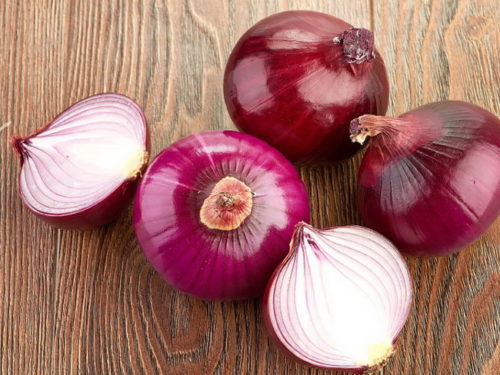
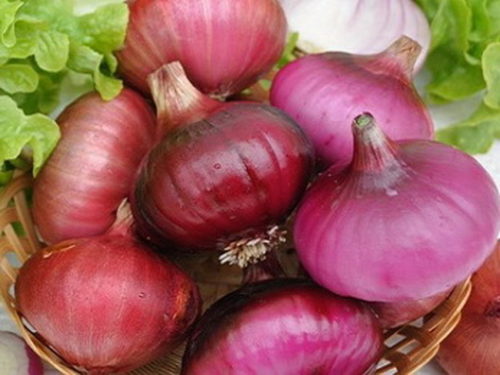
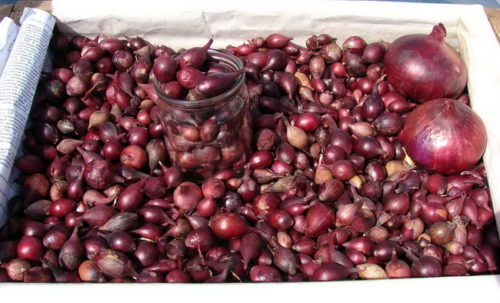
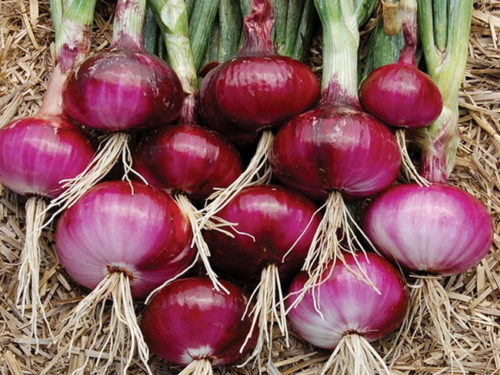
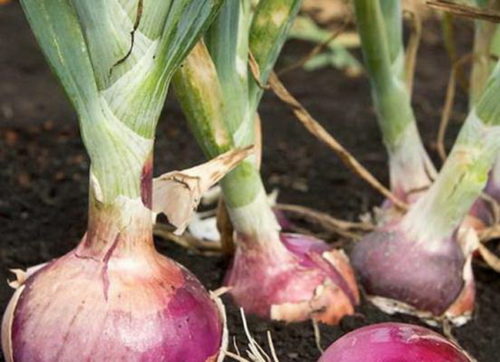
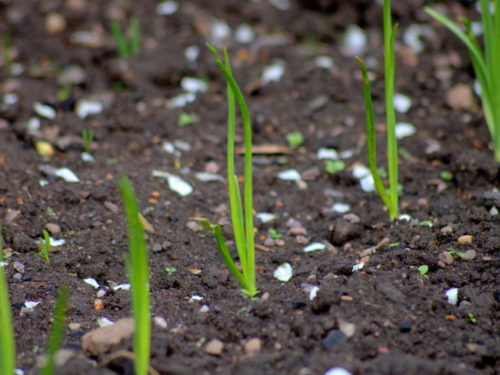
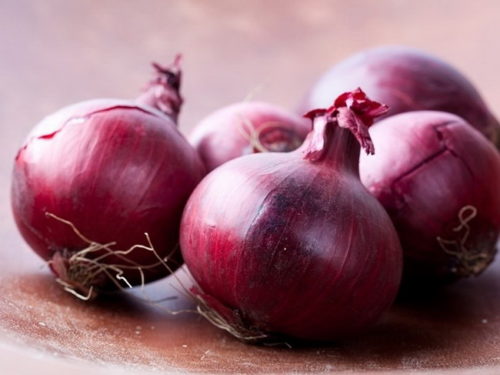
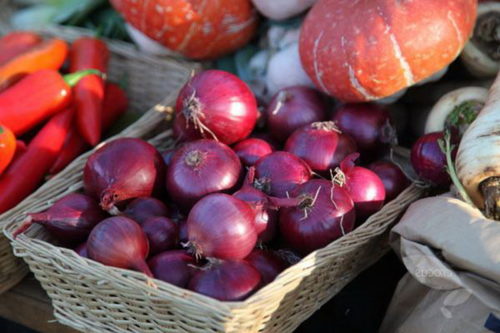
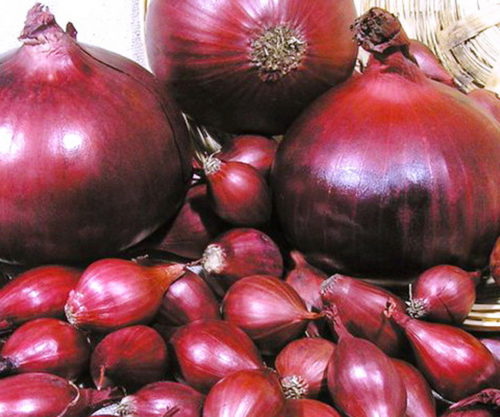
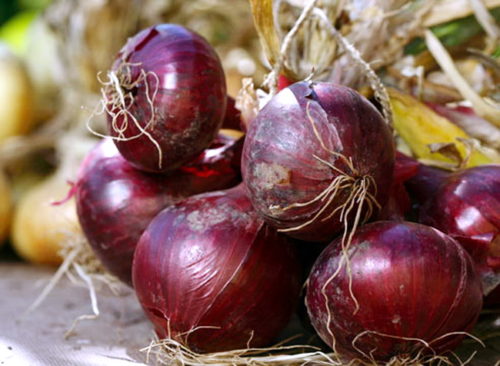
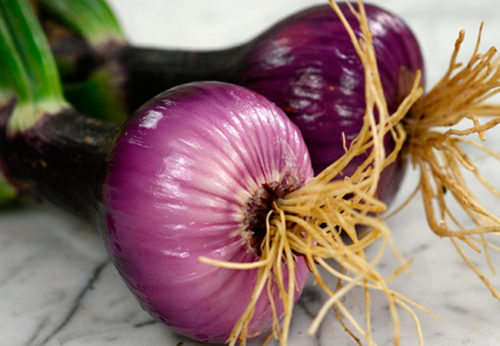


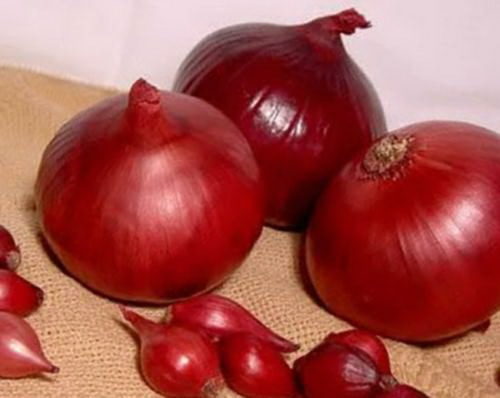
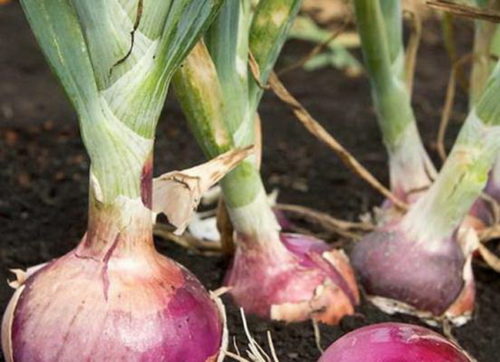












 Start a discussion ...
Start a discussion ...